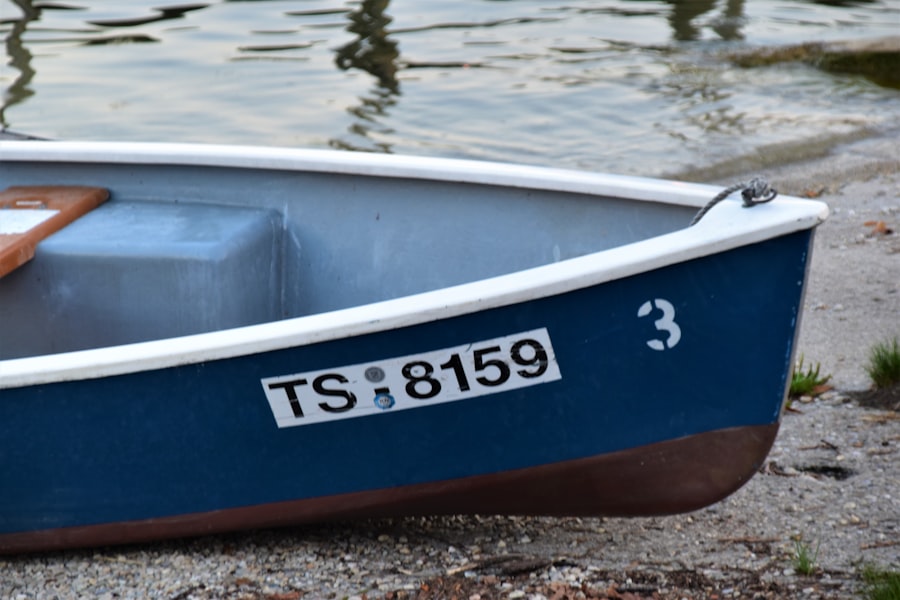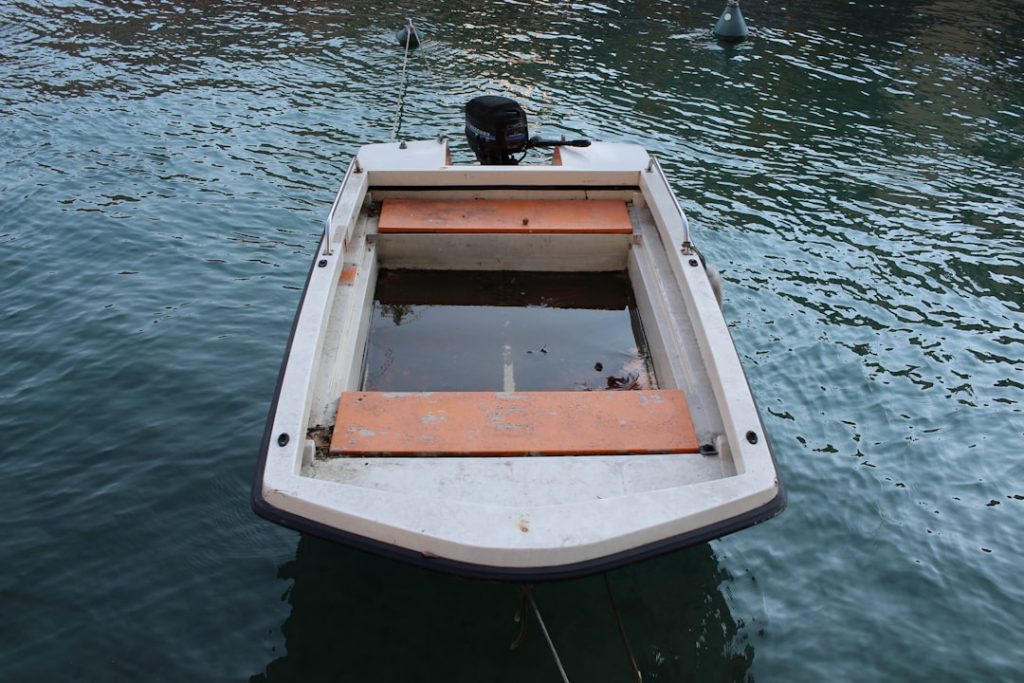Inflatable dinghies have become a popular choice for water enthusiasts, offering a versatile and practical solution for various aquatic activities. These lightweight vessels are designed to be easily transported and stored, making them ideal for both casual users and serious adventurers. The concept of inflatable boats dates back to the early 19th century, but advancements in materials and design have transformed them into reliable watercraft suitable for a wide range of applications, from leisurely outings on calm lakes to more demanding offshore excursions.
The appeal of inflatable dinghies lies not only in their portability but also in their adaptability. They can serve as tenders for larger boats, fishing platforms, or even as primary vessels for those who enjoy exploring coastal waters. With a variety of sizes and configurations available, inflatable dinghies cater to diverse needs, whether for solo paddlers or families looking to enjoy a day on the water.
As we delve deeper into the benefits, types, and maintenance of inflatable dinghies, it becomes clear why they have carved out a significant niche in the boating community.
Key Takeaways
- Inflatable dinghies are versatile, portable watercraft ideal for various water activities.
- They offer benefits like lightweight design, easy storage, and affordability.
- Key buying factors include size, material durability, and intended use.
- Proper maintenance and safety practices are essential for longevity and safe operation.
- Inflatable dinghies are widely available and make an excellent choice for both beginners and experienced users.
Benefits of Using an Inflatable Dinghy
One of the most significant advantages of inflatable dinghies is their portability. Unlike traditional hard-shell boats, which can be cumbersome and require significant storage space, inflatable dinghies can be deflated and packed away into compact bags. This feature makes them particularly appealing for those with limited storage options or for individuals who frequently travel to different locations for water activities.
Whether you’re heading to a remote lake or a bustling marina, the ease of transport that inflatable dinghies offer cannot be overstated. In addition to their portability, inflatable dinghies are often more affordable than their rigid counterparts. The materials used in their construction, such as PVC or Hypalon, provide durability while keeping production costs lower.
This affordability makes them accessible to a broader audience, including families and recreational users who may not want to invest heavily in a traditional boat. Furthermore, many inflatable dinghies come equipped with features such as built-in seating, oar locks, and even motor mounts, enhancing their functionality without significantly increasing the price.
Factors to Consider When Buying an Inflatable Dinghy

When considering the purchase of an inflatable dinghy, several factors should be taken into account to ensure that you select the right model for your needs. First and foremost is the intended use of the dinghy. Will it primarily serve as a tender for a larger boat, or do you plan to use it for fishing or recreational paddling?
Understanding your primary purpose will help narrow down your options and guide you toward the features that matter most. Another critical factor is the size and capacity of the dinghy. Inflatable dinghies come in various lengths and widths, typically ranging from 8 to 15 feet.
The size you choose should accommodate the number of passengers you expect to carry as well as any gear or equipment you plan to bring along. Additionally, consider the weight capacity of the dinghy; exceeding this limit can compromise safety and performance on the water. It’s also essential to think about how you will transport and store the dinghy when not in use, as larger models may require more space and effort to manage.
Different Types of Inflatable Dinghies
| Type of Inflatable Dinghy | Material | Typical Length (ft) | Capacity (persons) | Weight (lbs) | Primary Use | Max Engine Power (HP) |
|---|---|---|---|---|---|---|
| Hypalon Inflatable Dinghy | Hypalon (CSM) | 8 – 14 | 4 – 8 | 80 – 150 | Recreational, Fishing | 10 – 25 |
| PVC Inflatable Dinghy | Polyvinyl Chloride (PVC) | 6 – 12 | 2 – 6 | 50 – 120 | Casual Boating, Budget Use | 5 – 15 |
| Rigid Inflatable Boat (RIB) | Hypalon or PVC with Rigid Hull | 10 – 20 | 6 – 12 | 200 – 600 | Rescue, Military, Sport | 40 – 150+ |
| Foldable Inflatable Dinghy | Lightweight PVC or TPU | 7 – 11 | 3 – 5 | 40 – 90 | Easy Storage, Kayaking Support | 3 – 10 |
| Catamaran Inflatable Dinghy | Hypalon or PVC | 9 – 15 | 4 – 7 | 90 – 160 | Stability Focused, Leisure | 8 – 20 |
Inflatable dinghies can be categorized into several types based on their design and intended use. One common type is the inflatable kayak, which is designed for solo or tandem paddling. These kayaks are typically narrower and feature a streamlined shape that allows for efficient movement through the water.
Many inflatable kayaks come with adjustable seats and footrests, providing comfort during extended outings. Another popular category is the inflatable fishing boat. These vessels are often equipped with features tailored specifically for anglers, such as rod holders, storage compartments for tackle, and even built-in livewells for keeping fish fresh.
Some models are designed with a flat bottom for stability while casting lines or reeling in catches, making them ideal for calm lakes or slow-moving rivers. Additionally, there are rigid inflatable boats (RIBs), which combine an inflatable collar with a solid hull. RIBs are known for their stability and performance in rough waters, making them suitable for offshore adventures or rescue operations.
Maintenance and Care for Inflatable Dinghies
Proper maintenance is crucial for ensuring the longevity and performance of your inflatable dinghy. Regular cleaning is essential to remove dirt, saltwater, and other debris that can accumulate on the surface. After each use, especially in saltwater environments, it’s advisable to rinse the dinghy with fresh water to prevent corrosion and degradation of materials.
Using mild soap and a soft brush can help maintain the integrity of the fabric without causing damage. Storage is another critical aspect of care for inflatable dinghies. When not in use, it’s best to store the dinghy in a cool, dry place away from direct sunlight.
Prolonged exposure to UV rays can weaken the material over time, leading to cracks or leaks. If possible, consider using a protective cover to shield the dinghy from environmental elements during storage. Additionally, periodically check for any signs of wear or damage, such as punctures or seams coming apart.
Addressing these issues promptly can prevent more significant problems down the line.
Safety Tips for Using an Inflatable Dinghy

Safety should always be a top priority when using an inflatable dinghy. Before heading out on the water, ensure that everyone on board is wearing a properly fitted life jacket. This is especially important for children and inexperienced swimmers who may be at greater risk in case of an accident.
Familiarize yourself with local regulations regarding life jacket requirements and other safety equipment that may be mandated. Another essential safety tip is to conduct a pre-launch inspection of your dinghy. Check for any visible damage or leaks before inflating it, ensuring that all valves are functioning correctly.
Once on the water, be mindful of weather conditions; sudden changes in wind or waves can pose risks even in seemingly calm environments. It’s also wise to carry essential safety gear such as flares, a whistle, and a first aid kit on board. Having these items readily available can make a significant difference in emergency situations.
Where to Find Inflatable Dinghies for Sale
Inflatable dinghies can be found at various retailers both online and in physical stores. Specialty marine supply shops often carry a selection of inflatable boats from reputable brands, allowing customers to see models in person before making a purchase decision. These stores typically have knowledgeable staff who can provide valuable insights into different models and help you choose one that fits your needs.
Online marketplaces also offer a vast array of options when it comes to purchasing inflatable dinghies. Websites like Amazon, eBay, and dedicated boating retailers provide customer reviews and detailed product descriptions that can aid in your decision-making process. Additionally, many manufacturers have their own websites where you can explore their full range of products and sometimes find exclusive deals or promotions.
When buying online, ensure that you check return policies and warranty information to protect your investment.
Why an Inflatable Dinghy is Your Perfect Watercraft
Inflatable dinghies represent an excellent choice for anyone looking to enjoy time on the water without the complexities associated with traditional boats. Their portability, affordability, and versatility make them suitable for various activities ranging from fishing trips to leisurely paddling adventures. By considering factors such as size, intended use, and maintenance requirements, prospective buyers can find an inflatable dinghy that perfectly meets their needs.
With proper care and attention to safety protocols, an inflatable dinghy can provide years of enjoyment on lakes, rivers, and coastal waters alike. Whether you’re an experienced boater or new to aquatic activities, investing in an inflatable dinghy opens up a world of possibilities for exploration and adventure on the water.


